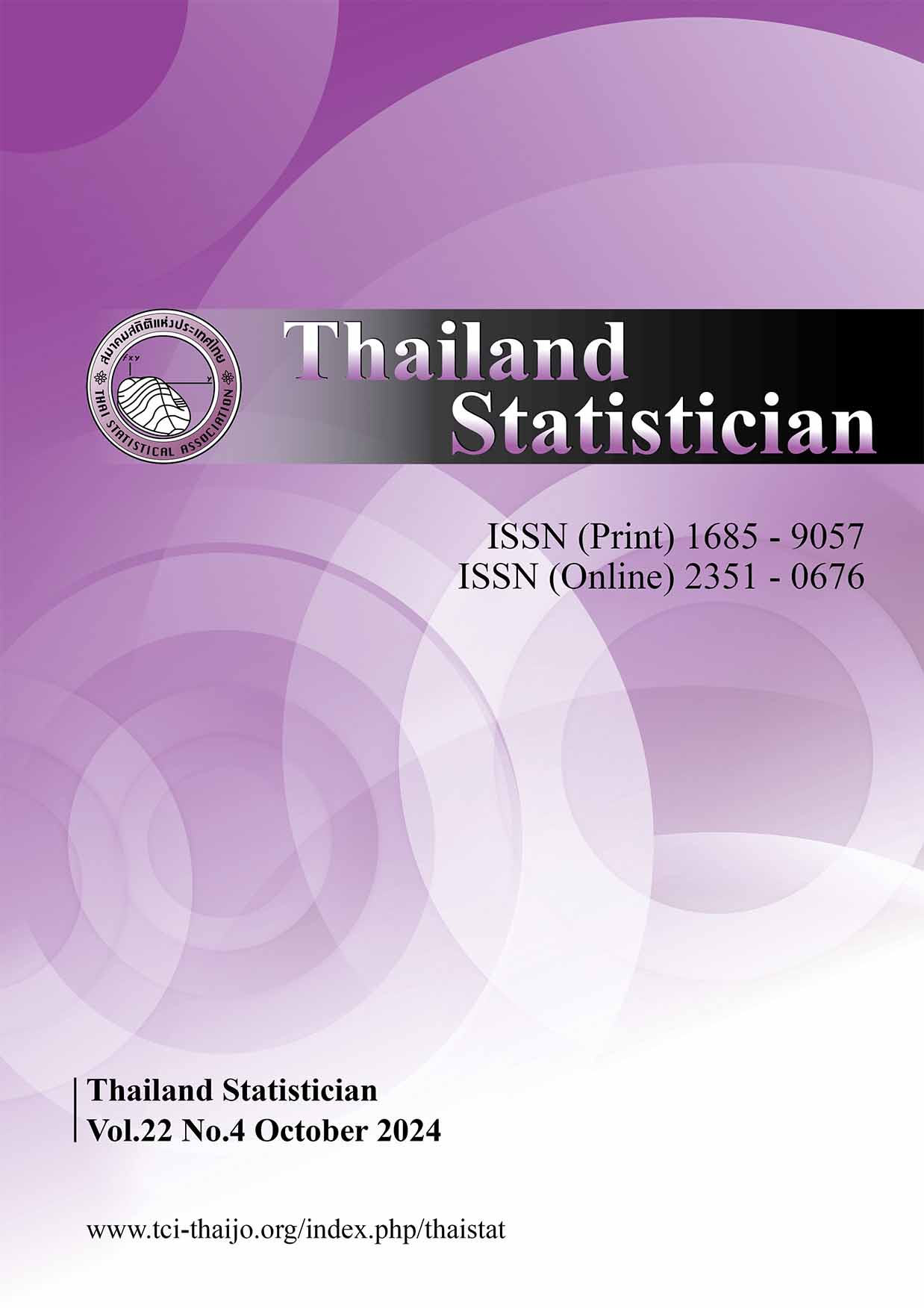Compound Poisson Correlated Frailty Model Based on Modified Weibull Baseline Distribution for Bivariate Survival Data
Keywords:
Bayesian comparison techniques, correlated frailty model, MCMC, compound Poisson distribution, modified Weibull distributionAbstract
Frailty models are survival models that are used to investigate the features of unobserved heterogeneity in people as it relating to disease and death. Despite their drawbacks, shared frailty models are frequently utilized. Several correlated frailty models were developed over the previous decade to solve these drawbacks. The performance of a compound Poisson correlated frailty model by considering modified Weibull distribution as the model baseline distribution is investigated in this work. The parameters in the proposed models are estimated by adopting Bayesian estimation procedure under the Markov chain Monte Carlo (MCMC) method. In addition, a comparison of the parameters’ true values with estimated values is done using a simulation study. The data from Kidney infection was then used to test the proposed models. Models are compared to existing models using different information criteria and the Bayes factor. Accordingly, the best model for infected patient’s data that have had their catheters inserted has been proposed.
References
Aalen OO. Heterogeneity in survival analysis. Stat Med. 1988; 7: 1121-1137.
Aalen OO. Modelling heterogeneity in survival analysis by the compound Poisson distribution. Ann
Appl Probab. 1992; 4: 951-972.
Butler JS, Anderson HA, Burkhauser RV. Testing the relationship between work and health. Econ
Lett. 1986; 20: 383-386.
Clayton DG. A model for association in bivariate life tables and its applications to epidemiological
studies of familial tendency in chronic disease incidence. Biometrika. 1978; 65: 141-151.
Gelfand AE, Ghosh SK. Model choice: a minimum posterior predictive loss approach. Biometrika.
; 85: 1-11.
Gelman A, Rubin DB. A single series from the Gibbs sampler provides a false sense of security.
Bayesian statistics. 1992; 4: 625-31.
Geweke J. Evaluating the accuracy of sampling-based approaches to the calculations of posterior
moments. Bayesian Statist. 1992; 4: 641-9.
Hanagal DD. Modeling survival data using frailty models. New York: Chapman & Hall/CRC; 2011
Hanagal DD, Pandey A, Ganguly A. Correlated gamma frailty models for bivariate survival data.
Commun Stat Simulat. 2017; 46(5): 3627-3644.
Hanagal DD, Pandey A. Correlated inverse Gaussian frailty models for bivariate survival data, Commun Stat Theory. 2018; 49(4): 845-863.
Hanagal DD. Correlated positive stable frailty models. Commun Stat Theory. 2021; 50(23): 5617-5633.
Holt JD, Prentice RL. Survival analyses in twin studies and matched pair experiments. Biometrika.
; 61: 17-30.
Ibrahim JG, Chen M-H, Sinha, D. Bayesian Survival Analysis. Verlag: Springer; 2001.
Kheiri S, Kimber A, Meshkani MR. Bayesian analysis of an inverse Gaussian correlated frailty model.
Comput Stat Data Anal. 2007; 51: 5317-5326.
McGilchrist CA, Aisbett CW. Regression with frailty in survival analysis. Biometrics. 1991; 47: 461-
Oakes D. A concordance test for independence in the presence of censoring. Biometrics. 1972; 38:
-455.
Pandey A, Lalpawimawha R. Comparison of correlated frailty models. Commun Stat Simulat. 2020;
:1-9.
Pickles A, Crouchley R, Simonoff E at al. Survival models for developmental genetic data: Age of
onset of puberty and antisocial behavior in twins. Genet Epidemiol. 1994; 11(2): 155-170.
Sahu SK, Dey DK, Aslanidou H, Sinha D. A Weibull regression model with gamma frailties for
multivariate survival data. Lifetime Data Anal. 1997; 3: 123-137.
Santos CA, Achcar JA. A Bayesian analysis for multivariate survival data in the presence of covariates. J Stat Theory Pract. 2010; 9: 233-253.
Sarhan AM, Zain-Din M. New generalized Weibull distribution. Appl Sci. 2008.
Vaupel JW, Manton KG, Stallard E. The impact of heterogeneity in individual frailty on the dynamics
of mortality, Demography. 1979; 16: 439-454.
Wienke A. Frailty models in survival analysis. Chapman and Hall/CRC; 2010 Jul 26.
Xue X, Ding Y. Assessing heterogeneity and correlation of paired failure times with the bivariate
frailty model. Stat Med. 1999; 18: 907-918.
Yashin AI, Vaupel JW, Iachine IA. Correlated individual frailty: an advantageous approach to survival
analysis of bivariate data. Math Popul Stud. 1995; 5(2): 145-159.
Downloads
Published
How to Cite
Issue
Section
License

This work is licensed under a Creative Commons Attribution-NonCommercial-NoDerivatives 4.0 International License.




